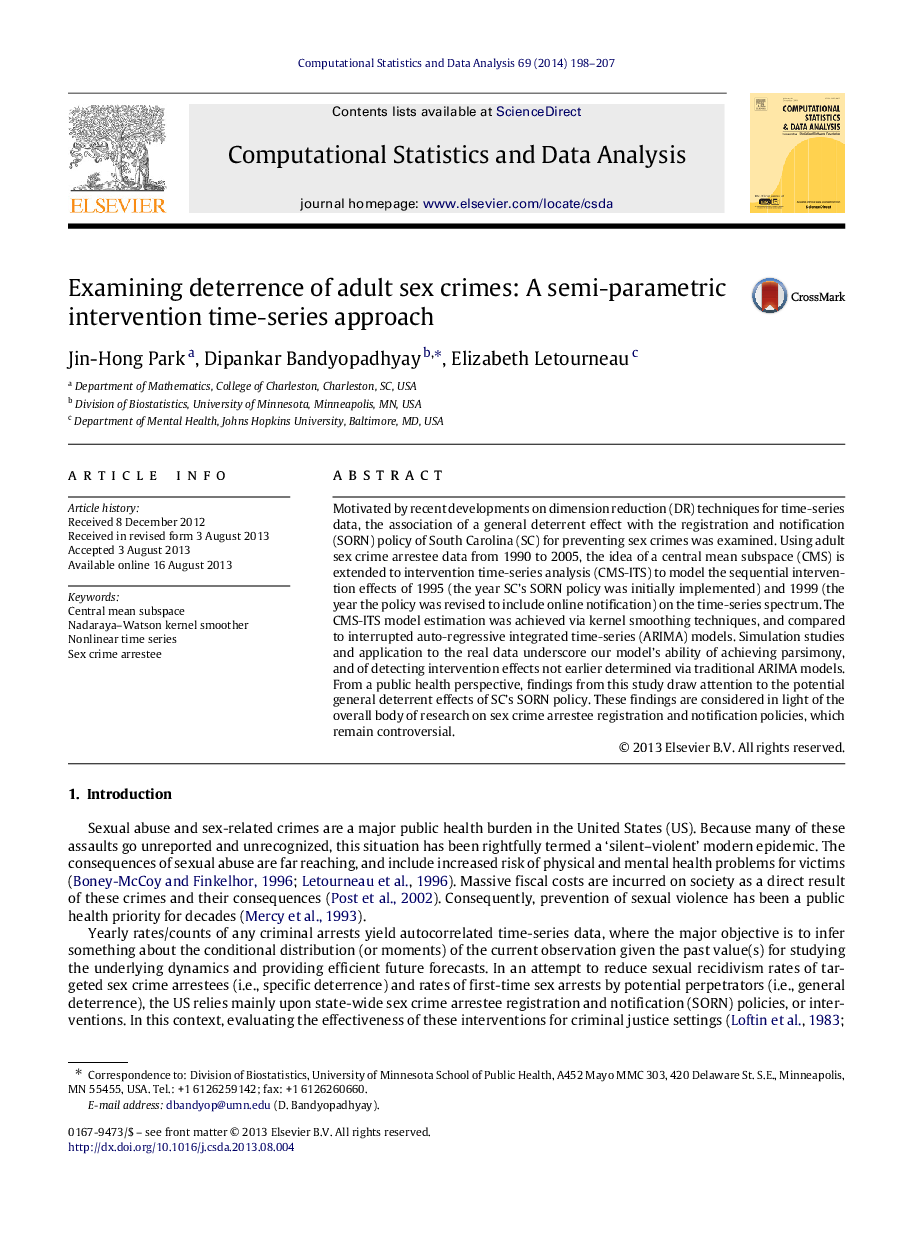| Article ID | Journal | Published Year | Pages | File Type |
|---|---|---|---|---|
| 414985 | Computational Statistics & Data Analysis | 2014 | 10 Pages |
Motivated by recent developments on dimension reduction (DR) techniques for time-series data, the association of a general deterrent effect with the registration and notification (SORN) policy of South Carolina (SC) for preventing sex crimes was examined. Using adult sex crime arrestee data from 1990 to 2005, the idea of a central mean subspace (CMS) is extended to intervention time-series analysis (CMS-ITS) to model the sequential intervention effects of 1995 (the year SC’s SORN policy was initially implemented) and 1999 (the year the policy was revised to include online notification) on the time-series spectrum. The CMS-ITS model estimation was achieved via kernel smoothing techniques, and compared to interrupted auto-regressive integrated time-series (ARIMA) models. Simulation studies and application to the real data underscore our model’s ability of achieving parsimony, and of detecting intervention effects not earlier determined via traditional ARIMA models. From a public health perspective, findings from this study draw attention to the potential general deterrent effects of SC’s SORN policy. These findings are considered in light of the overall body of research on sex crime arrestee registration and notification policies, which remain controversial.
